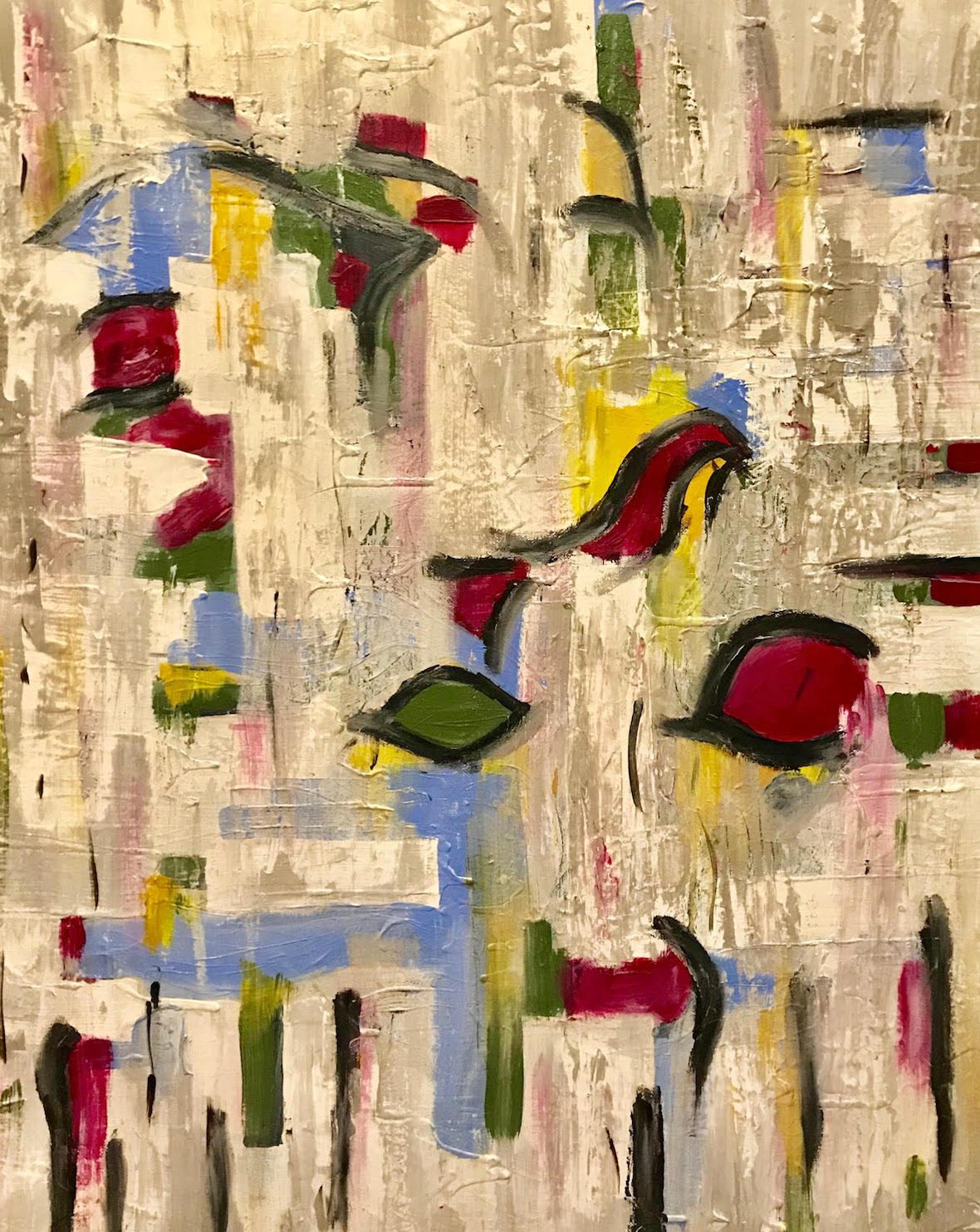It’s the age-old question; how do we balance teaching art and making art? While we know creating is vital to our well-being, finding the time to do so can seem like an impossible task.
Plus, what works for one art teacher may not work for another. To help with this conundrum, I reached out to several of my art teacher heroes. Together we’ll share our best tips for balancing it all.
Here are 12 Ways to Balance Teaching Art and Creating Art
1. Use art to make memories.
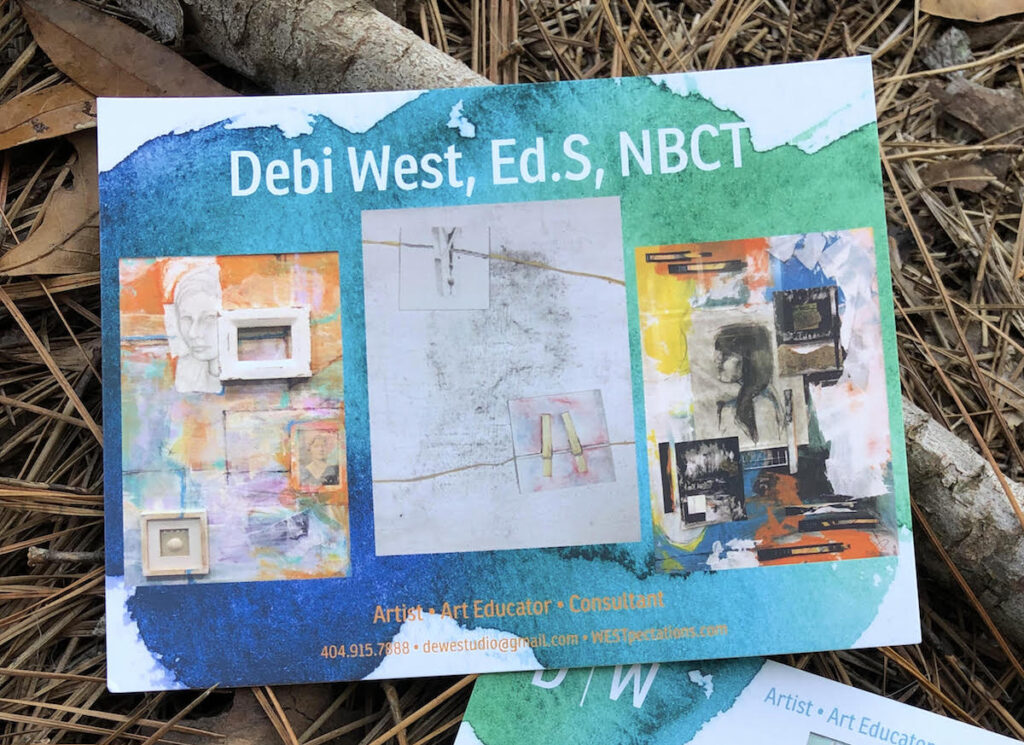
Several years ago, I started to seriously consider how much I was enjoying the process of drawing, doodling, and experimenting with media. It dawned on me that perhaps I should do this weekly using the journal prompts I teach my students. So, I started to do the same prompt-based art journal work weekly I required my students to do. Not only did I love it, they did, too! They thought it was hilarious when I had an extremely busy week and came in with an average journal page because they realized I could now truly relate to what it was like to be a student again. But I never missed one because they weren’t allowed to miss one either. We held each other accountable, and that was, perhaps, the key.
Once I retired, I had the opportunity to have a one-woman show at the local library. I immediately said, “Yes!” and thought I’d get started right away. Fast forward several months, and it was almost time to hang the exhibit. Yikes! I was at a loss.
So, I started going through my journals and all of my old art and examples I’d made throughout the years, and my exhibit appeared. I spent the next week working tirelessly and ended up with a 52-piece collection I aptly titled, “Recycled Memories.” It was an emotional and exhilarating experience because it forced me to look at the body of work before me and tell a visual story of my life as an art educator, a wife, a mother, a friend, a daughter, a sister and, of course, as an artist!
Now, I try to work in my journals several times a week. It’s like an exercise program, a habit you have to stick to, and then suddenly you can’t live without it.
2. Intentionally set aside time.
Vanessa Hayes-Quintana, a teacher in Denver, CO, says the most critical part of her balance is being intentional about setting aside time to create. “Think of it like going to your own class. Artist Robert Irwin explained that school is a place where we learn how to learn. After we’re finished learning how to learn, the purpose of school changes.
The purpose of my own class is to give myself that time to develop. Artist Chuck Close said, ‘Inspiration is for amateurs. The rest of us just show up and get to work.’ With my art, I know what I want to be doing. If I make the time, then take the time, the magic will happen!”
3. Balance as best you can.
For Tricia Spencer, an art teacher in Buford, GA, balancing artmaking and teaching has always been a committed decision. She says, “As we tap into where our joy comes from, it’s up to us to make time for whatever that might be. For me, it’s been almost like a hierarchy. It’s shifted from time to time depending on where I am personally and/or professionally. But, creating art has always been something that defines me.
No matter which tips the scale, as far as balance goes, both making and teaching have always been a source of absolute joy for me. I think I am able to commit to both because I value being happy. And my art is now making me money on the side as I have found that working in my studio in the evening and doing reverse paintings on old windows for clients is not only therapeutic, it’s also profitable!”
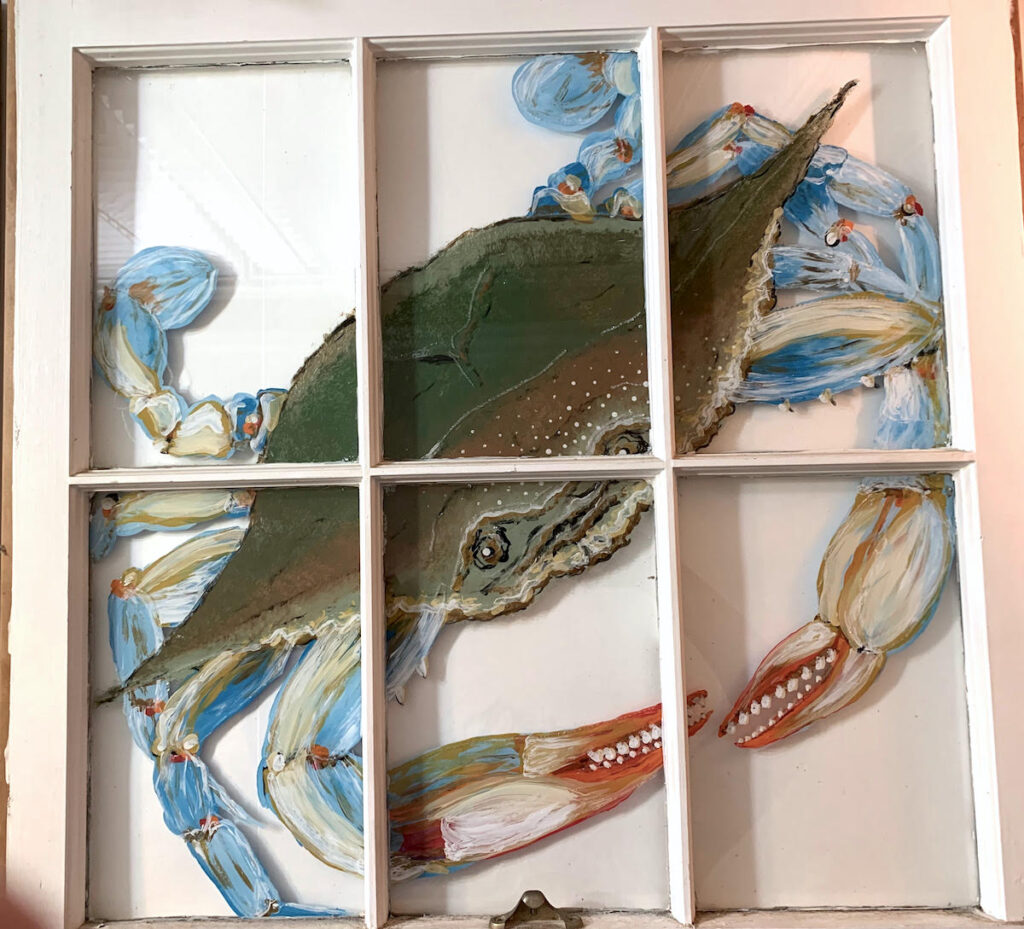
4. Schedule an art date with yourself.
Linda Kieling, a teacher in West Linn, OR, has a fantastic idea: schedule an art date with yourself! She says, “We schedule everything else in our lives – playdates, meetings, dinner with friends, etc. We need to put creating on our schedule to make it happen. Otherwise, we’ll find excuses that there isn’t time. Start small with fifteen minutes. Stick with fifteen minutes. If you go longer, say an hour, next time you’ll think ‘I don’t have an hour, so I am not going to start.’ You already schedule other important things. Put it on the calendar. Schedule art dates for yourself.”
5. Leave schoolwork at school.
Abby Schukei, an art teacher in Omaha, NE, finds balance by keeping her teaching life separate from her home life. “I balance teaching and creating art by setting an intention to create. I never work on schoolwork outside of school. I’ve come to live by the philosophy that there is always work to be done and I’m okay with leaving what I can’t get done in one day for the next.
As far as creating art, I spend at least thirty minutes working in my sketchbook or on an ongoing project daily. It’s usually at night before I go to bed, which is the perfect way to wind down. On the weekends, I schedule at least a one-hour session with myself to work on larger projects. It usually turns into longer, but it forces me to create!”
6. Set a goal.
Drew Brown, from Roswell, GA, has some great ideas for finding time to make art. “I have found that the best strategies for me to make artwork are not making excuses, taking classes in the summer, and making a personal commitment to enter work into shows, therefore setting due dates to finish work.
Even though these three strategies are a step in the right direction, I am still not satisfied with the amount of time I spend creating. Therefore, my newest goal includes increasing time with my journal. The journal is portable, and the materials are relatively simple enough that one can journal anywhere. Furthermore, the journal is a great place to collect and generate ideas, take artistic risks, and pursue a more consistent practice of drawing.”
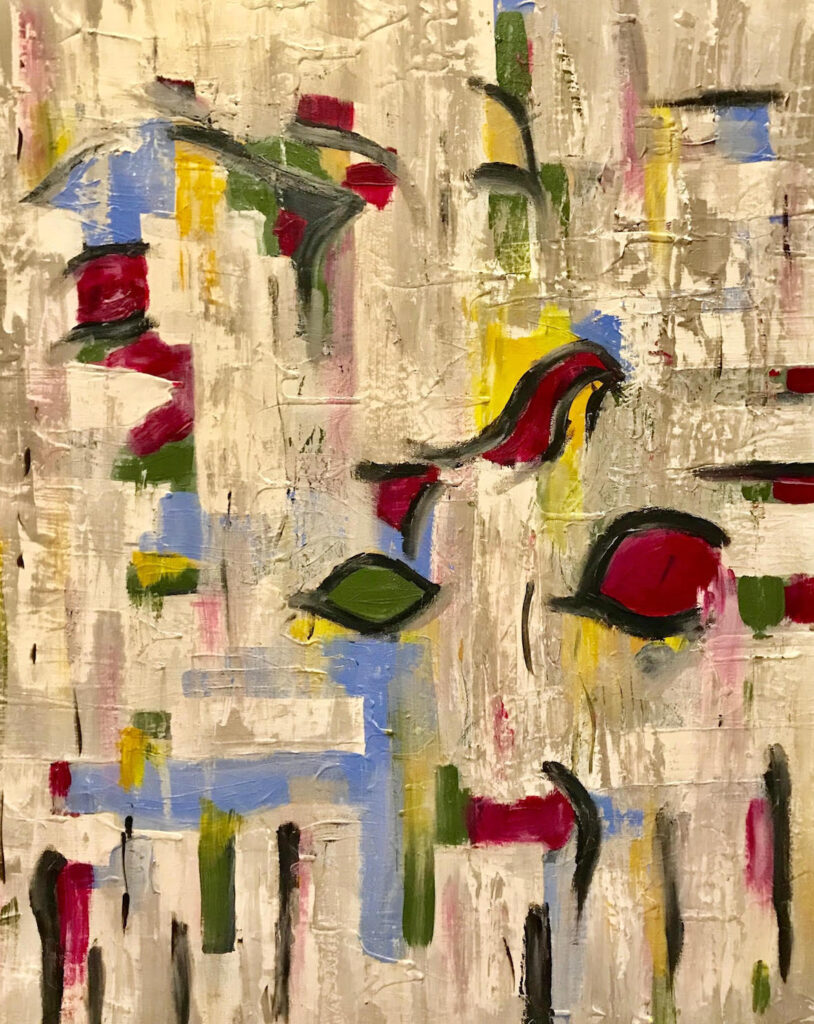
7. Experiment with what your students are using.
Shannon Lauffer, from Philadelphia, PA, loves to push the boundaries. She says, “Finding the time to create can be tricky. I like to experiment with media as an artist. I use what my students are going to use. Sometimes, using school-grade supplies to develop my craft can be a real challenge! I’ll take something like Model Magic and try to push the boundaries as an artist; it’s really fun. It allows me to understand the challenges my students are going to face, gives me an artistic problem to solve, and pulls me out of the habit of only creating teacher samples.”
8. Build up an idea bank.
Stan Dodson, from Waynesboro, GA, finds inspiration in the process. He says, “During class, I often see myself as an art director, assisting and guiding students while their ideas and work develop. We look at idea development like cooking spaghetti; to figure out when it is cooked you often have to throw it to see if it sticks…for ideas, we throw a lot of spaghetti. Sometimes the ideas stick, and sometimes they don’t.
It is from these digging and mining sessions that I often find ideas for myself. Many times I even think, ‘If they don’t end up doing this idea I just might.’ The balance for me lies in cutting away time to make art. Success lies in the little moments; the sketches, thumbnails, and image clippings. This idea bank is a resource from which I will mine. The encouragement I would pass along to other teaching artists is to keep collecting, sketching, and documenting with an intent on producing. The process is just as important as the product.”
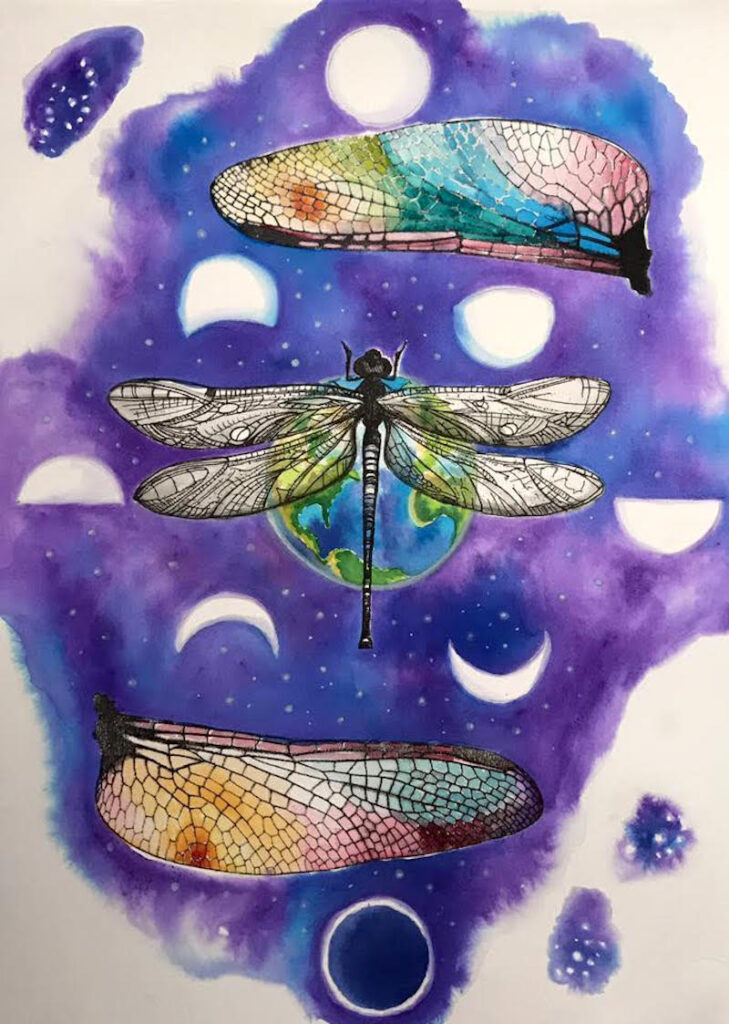
9. Create alongside your students.
For Stephanie Pickens in Cumming, GA, finding a balance can be difficult. “Balance for me is very hard. I have to make a point in the classroom to work beside the kids and create when they are creating. They love to watch me work. It’s inspiring when we watch each other.”
10. Remember, creating can be cathartic.
Ivey Coleman, from Agusta, GA, says it’s important to remember why you create. She says, “I honestly don’t feel like I tend to my own artmaking enough. I think I just put so much into creating and cultivating the learning that happens in my classroom that I am pretty tapped out. But this fall, I realized that I have to start creating more since it’s almost like a cathartic experience. I have even started keeping a sketchbook by my bed!”
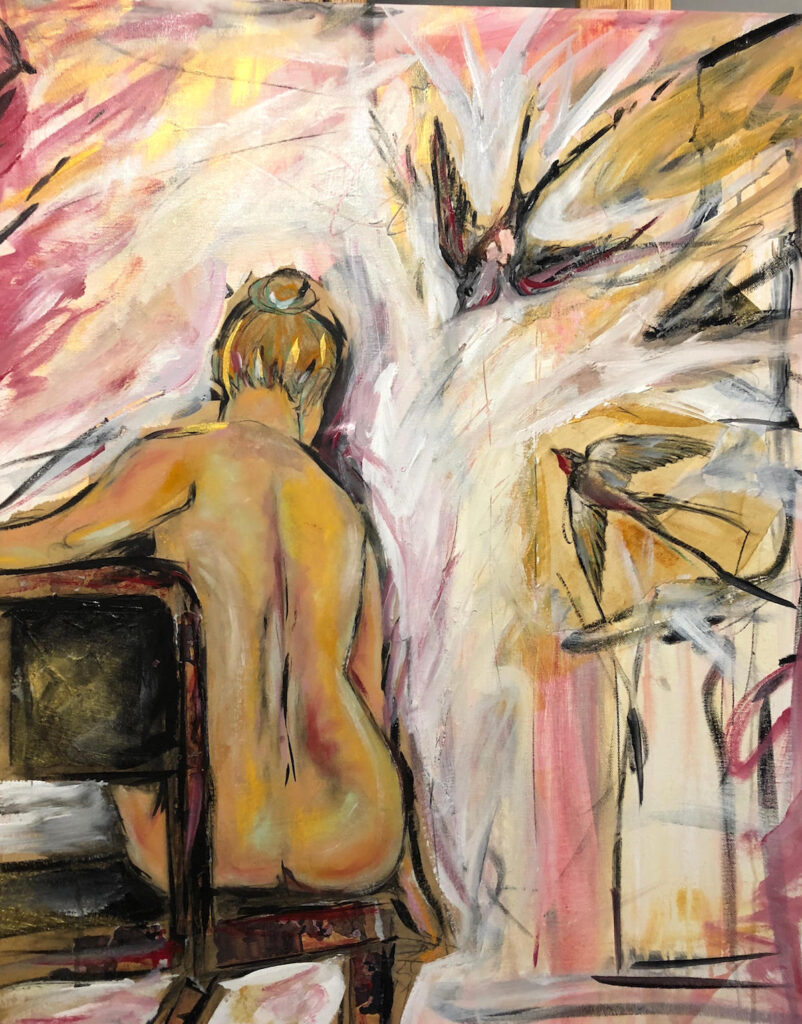
11. Don’t forget about your sketchbook.
Brooke Adamson, from Duluth, GA, says working in her sketchbook has helped her get back into the routine of making her own art. “I keep a small moleskin in my bag with drawing pens, gel pens, and such. When I have downtime during class or at home, I paint pages with watercolor to doodle on. I work in my sketchbook in the car-rider line when I pick up my daughter after school, at gymnastics, and while dinner is cooking.
Now that I am generating ideas, I am trying to work in my office at home for thirty minutes a night while my daughter works on her gymnastics or her homework. I’m slowly creating time and space.”
12. Don’t underestimate the power of studio time.
Ali Scott, in Atlanta, GA, says it’s difficult not to put all your energy into student-related events. She combats this by finding creative things to do throughout the year and says, “It’s essential to find your own studio time. In the years that I’ve had that I felt like a much stronger teacher.”
These are the voices of twelve, K-12 visual art educators who are finding the balance between teaching art and making art. I hope you’re inspired by their words. I’d love to hear from you, so please share your thoughts. Remember, “Together, We ART Better!”
How do you balance teaching art and creating art?
Do you work in a visual journal or sketchbook regularly?
Magazine articles and podcasts are opinions of professional education contributors and do not necessarily represent the position of the Art of Education University (AOEU) or its academic offerings. Contributors use terms in the way they are most often talked about in the scope of their educational experiences.
